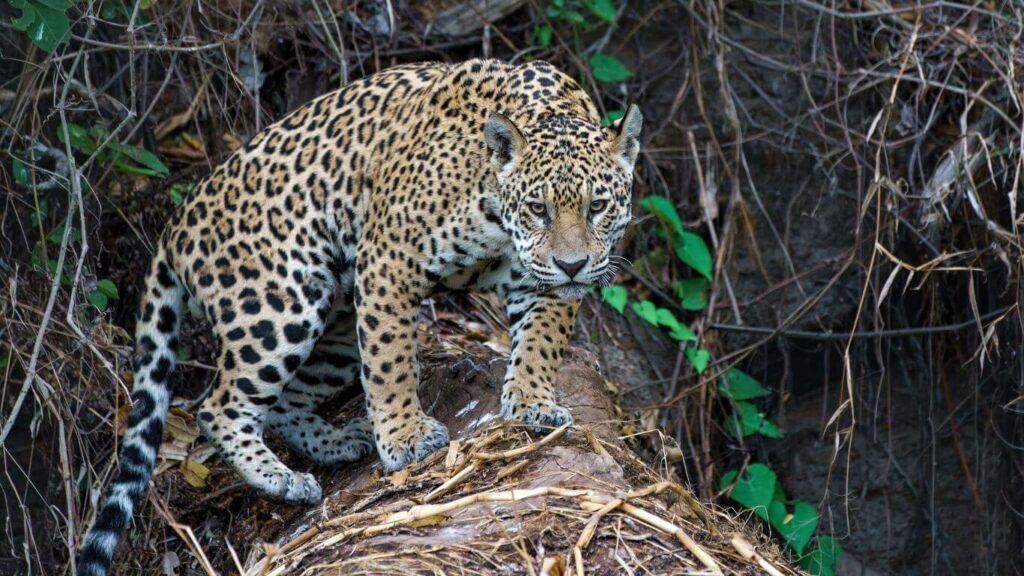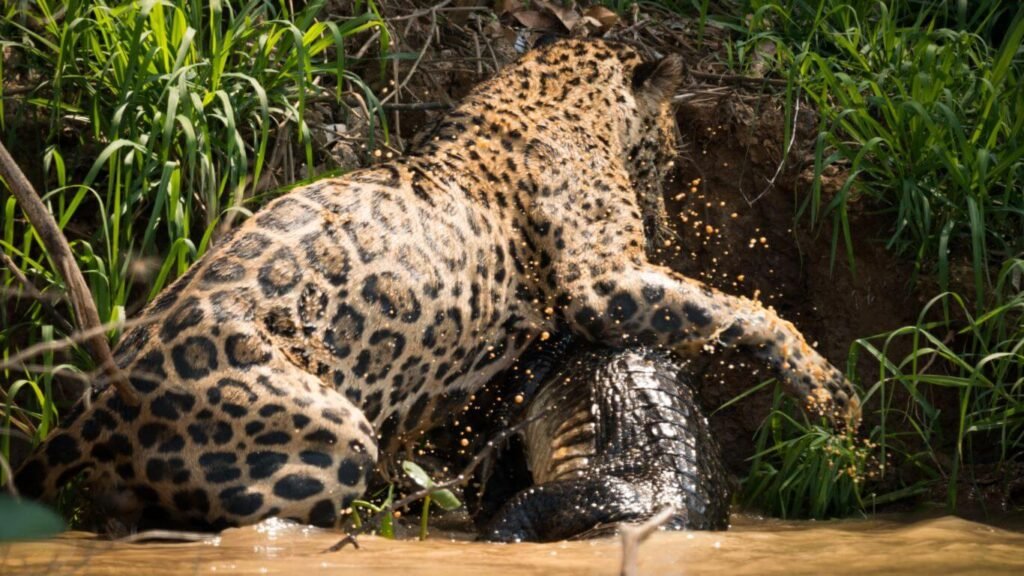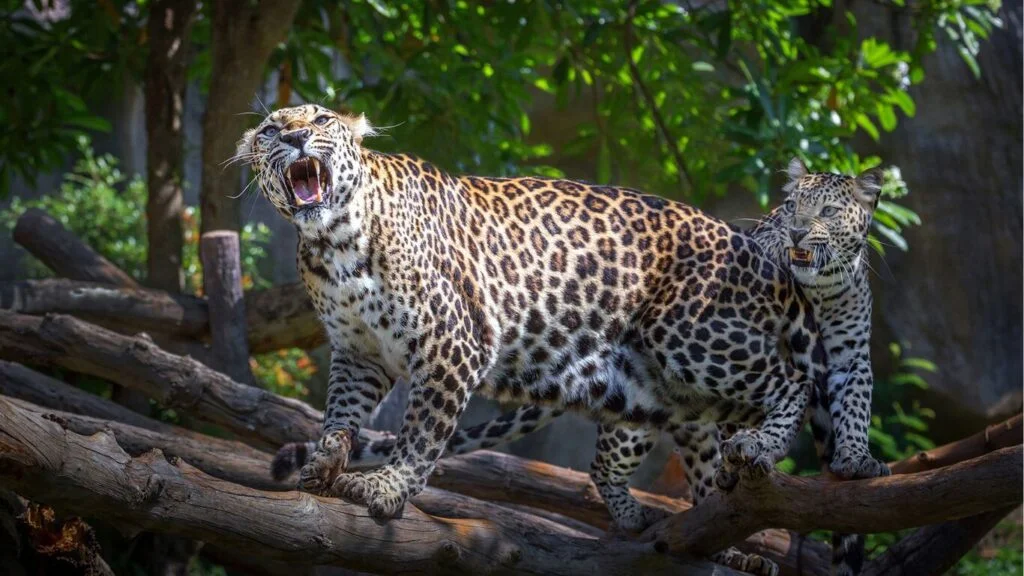The Pantanal, one of the largest and most biodiverse wetlands in the world, is the ideal setting for a unique experience: Jaguar Sightings . These powerful felines move gracefully through the vegetation, and their mere presence in the landscape leaves any visitor amazed.
Here we tell you why the Pantanal is the perfect place to observe these predators, how they have adapted to the extreme conditions of their environment, and what conservation strategies are key to ensuring their future.
Jaguar Sightings in the Pantanal
The Pantanal is one of the most fascinating and biodiverse ecosystems in the world, making it the perfect setting for anyone wishing to get a close-up view of a jaguar (Panthera onca). These felines, once elusive and difficult to observe, are now more frequently seen thanks to conservation efforts and a better understanding of their behavior.
Here’s why the Pantanal is an ideal place for jaguar sightings:
- Open vegetation: It makes spotting these felines easier.
- Abundant prey: Capybaras, caimans, and other animals attract jaguars for hunting.
- Wetlands: Jaguars are drawn to water bodies, especially during the dry season.
The Jaguar’s Adaptive Behavior
Jaguars are highly adaptable creatures, adjusting their behavior to survive the extreme conditions of the Pantanal. A fascinating example is their use of giant armadillo burrows to escape the intense heat. Some key points about this adaptation include:
- Natural refuge: Jaguars use burrows to shelter from the heat and rest.
- Strategic hunting: Staying near these burrows allows jaguars to ambush their prey more effectively.
- Energy conservation: By avoiding extreme heat, jaguars save energy for hunting in the cooler hours of the day or night.

Why the Pantanal is Ideal for Jaguar Sightings
The Pantanal stands out as one of the best places in the world for jaguar sightings for several reasons:
- Open topography that makes it easier to spot these big cats.
- High jaguar density, increasing the chances of sightings.
- Diverse wildlife, including exotic birds, caimans, and other mammals, which adds to the overall experience.
The dry season, from May to October, is the best time for jaguar sightings, as wildlife congregates around water sources.
Jaguar Hunting Methods
Jaguars have developed unique hunting methods that enable them to survive in such a challenging ecosystem. Here are some of their primary hunting strategies:
- Ambushing near water sources: Jaguars wait for prey like capybaras and caimans to approach water before surprising them.
- Preference for large prey: They hunt large animals, such as deer and capybaras, to ensure a substantial meal.
- Using the environment to their advantage: Jaguars rest in burrows to save energy and stay close to hunting areas.

Why Visit the Pantanal?
Seeing a jaguar in the wild is not just an exciting experience, but also a deep connection to nature. By visiting the Pantanal, you directly contribute to the conservation of jaguars and help preserve their natural habitat.

Experience the magic of watching one of the world’s most majestic felines in its natural environment in one of the most biodiverse wetlands on the planet. The Pantanal awaits you!





